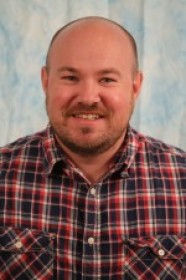
11:00 am to 12:00 am
Event Location: NSH 1507
Abstract: In the United States the annual cost of cardiovascular disease exceeds $475 billion. Medical imaging costs more than $100 billion annually, with cardiovascular imaging representing almost one-third. Any approach that can reduce the need for imaging in cardiovascular care has the potential to provide significant savings.
Without direct visualization of the operating site, minimally invasive cardiac interventions rely on real-time medical imaging, anatomical models, and tracked tools. Preoperative imaging, such as MRI, fluoroscopy, and echocardiography, is used to create models. During the intervention, tools are tracked using electromagnetic position sensors. These inherently exhibit noise, which is filtered using established techniques. However, in the HeartLander system, a minimally invasive inchworm robot which crawls over the surface of the heart, there is another disturbance: motion of the heart due to heartbeat and respiration. Currently this motion is treated as noise and dealt with in the usual ways. However, this motion is not noise, and treating it as such unnecessarily increases the uncertainty in the system. If, instead of rejecting quasi-periodic heart motion as noise, this geographically nonuniform motion is used as an aid to localization, it can improve the accuracy of tool localization and also obviate additional imaging.
The goal of this thesis is to develop localization and mapping techniques which improve performance of systems which undergo periodic motion, which are particularly applicable in the medical robotics field. The motivating factors for this project are: to improve positioning accuracy; to use only whatever images were generated for diagnosis, with no additional preoperative or intraoperative imaging, thereby reducing costs and patient radiation dose; and to leverage periodic motion instead of rejecting it as noise. The work has 3 objectives: 1) to more accurately model the translational and rotational de- formation of points on the surface of the heart; 2) to construct global models of the deforming heart using sparse spatial information; 3) and to localize on these global models.
By maximizing the information extracted from the tracker that is already present, this research will minimize dependence on intraoperative and preoperative imaging, thereby reducing medical costs (and radiation exposure, in the case of CT); this will also have the effect of extending compatibility of the technology to centers unequipped with advanced imaging equipment, including economically-disadvantaged areas and developing countries, in which the benefits of surgical robotics are generally unavailable today.
Committee:Cameron Riviere, Chair
Howie Choset
George Kantor
Pierre Dupont, Harvard Medical School
